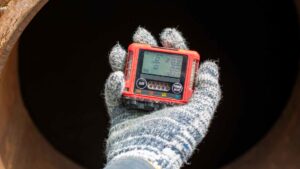Indoor Air Testing FAQs
How to Test Air Quality in IT Companies?
Testing air quality in IT companies involves employing comprehensive methods such as air sampling, monitoring for pollutants, and utilizing air quality testing equipment. Our indoor air quality testing services for IT companies encompass a thorough assessment of pollutants and ventilation systems to ensure a healthy working environment.
What is the indoor air quality test method?
Indoor air quality testing methods include sampling air for pollutants, measuring concentrations of specific contaminants, and assessing ventilation systems. Our indoor air quality testing service utilizes these methods to provide a detailed analysis of the air quality in various environments, including IT companies.
WHO standards for indoor air?
WHO standards for indoor air quality set limits for pollutants such as particulate matter, carbon monoxide, nitrogen dioxide, and formaldehyde. Our indoor air quality testing service aligns with WHO standards, ensuring that indoor air meets health guidelines and providing actionable insights for improvement.
What is the ISO for indoor air quality?
The ISO standard for indoor air quality is ISO 16000, which provides guidelines for sampling methods, measurement techniques, and assessment strategies. Our indoor air quality testing service adheres to ISO 16000 standards, offering a systematic approach to evaluating indoor air quality.
What level of air quality is harmful?
Harmful air quality levels are determined by elevated concentrations of pollutants such as particulate matter, volatile organic compounds (VOCs), and carbon monoxide. Our indoor air quality testing service assesses pollutant levels against health standards to identify and mitigate potential risks.
How can we reduce health risks from indoor pollutants?
To reduce health risks from indoor pollutants, effective ventilation, air purification systems, and source control measures are essential. Our indoor air quality testing service provides recommendations based on pollutant levels, helping to implement strategies for reducing health risks in IT companies.
What are 10 diseases caused by polluted air?
Diseases caused by polluted air include respiratory conditions such as asthma, bronchitis, lung cancer, cardiovascular diseases, and respiratory infections. Our indoor air quality testing service aims to identify and mitigate pollutants, contributing to a healthier indoor environment and reducing the risk of associated diseases.
How can I clean the air in my house naturally?
Natural methods to clean indoor air include ventilation, houseplants, using natural air purifiers, and minimizing indoor pollutant sources. Our indoor air quality testing service provides insights into pollutant levels, guiding homeowners and IT companies on effective strategies for naturally improving air quality.
What are six human activities that cause air pollution?
Human activities causing air pollution include burning fossil fuels, industrial processes, transportation, agriculture, waste disposal, and use of household products. Our indoor air quality testing service identifies pollutant sources, aiding in the development of targeted strategies to mitigate air pollution.
What You Can Do to Help Improve Air Quality
Individuals can help improve air quality by using energy-efficient appliances, reducing vehicle emissions, avoiding indoor smoking, and promoting green spaces. Our indoor air quality testing service offers guidance on specific actions that can be taken to contribute to improved air quality in both residential and workplace environments.
Why is it important to test indoor air quality in IT companies?
Testing indoor air quality in IT companies is crucial for ensuring the health and well-being of employees, increasing productivity, and complying with occupational health and safety standards. Our indoor air quality testing service provides IT companies with actionable data to create a healthy and comfortable working environment.
What are the health risks of poor indoor air quality?
Poor indoor air quality can cause respiratory issues, headaches, fatigue, and worsen existing health conditions.
What can I do to improve my indoor air quality?
Improve indoor air quality by cleaning regularly, ensuring proper ventilation, using air purifiers, and avoiding smoking indoors.
What are the health risks of using air fresheners?
Air fresheners can contain harmful chemicals, leading to respiratory irritation and exacerbating asthma symptoms. PREWELLABS advises caution and recommends testing for indoor air quality.
What does a professional indoor air quality test involve?
Professional indoor air quality testing by PREWELLABS includes inspection, measurement of pollutants, air sample analysis, and tailored recommendations for improvement.
What are some common ways to improve indoor air quality?
Improve indoor air quality with regular HVAC maintenance, using natural cleaning products, incorporating indoor plants, and optimizing ventilation. PREWELLABS provides expert testing and guidance for effective solutions.





